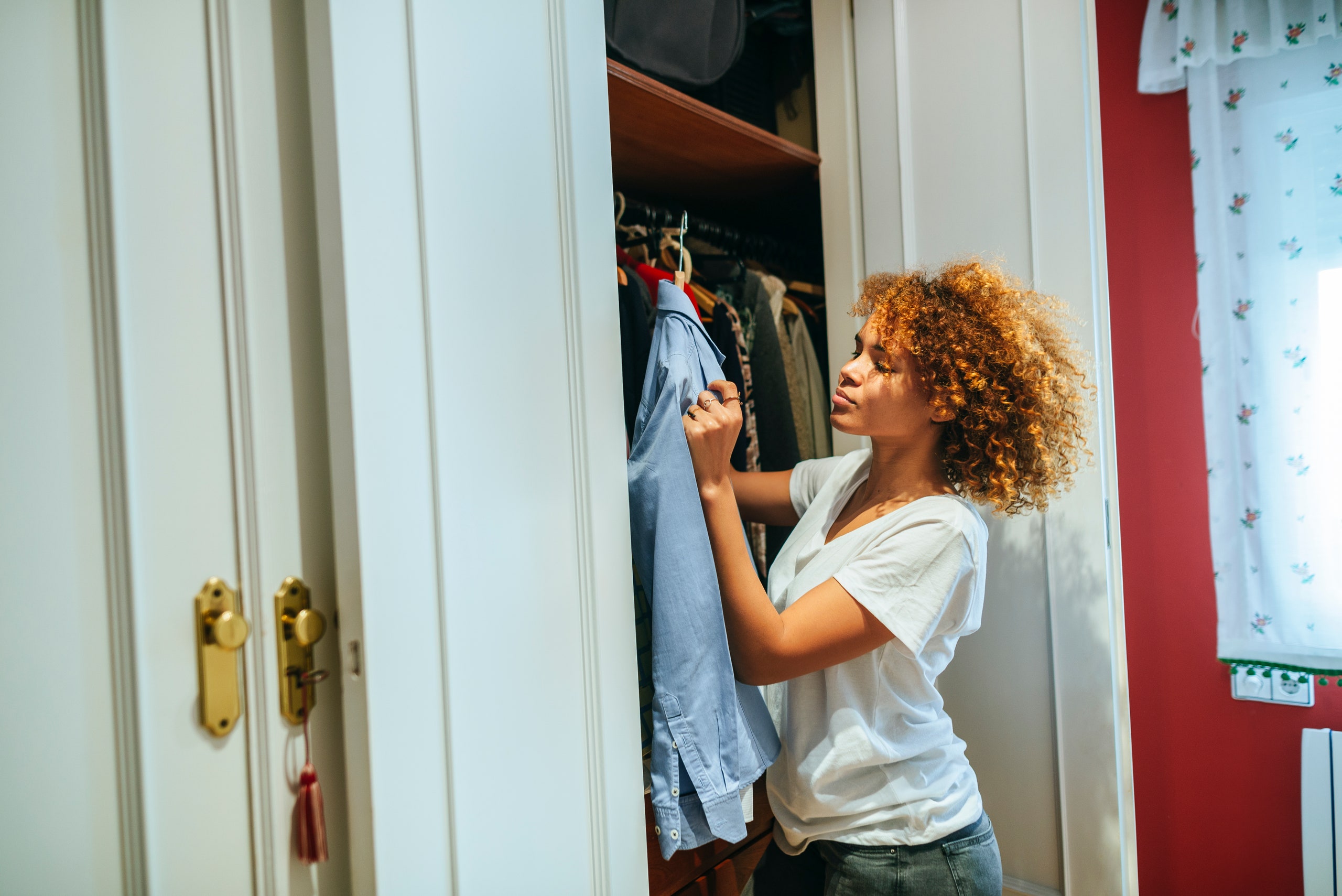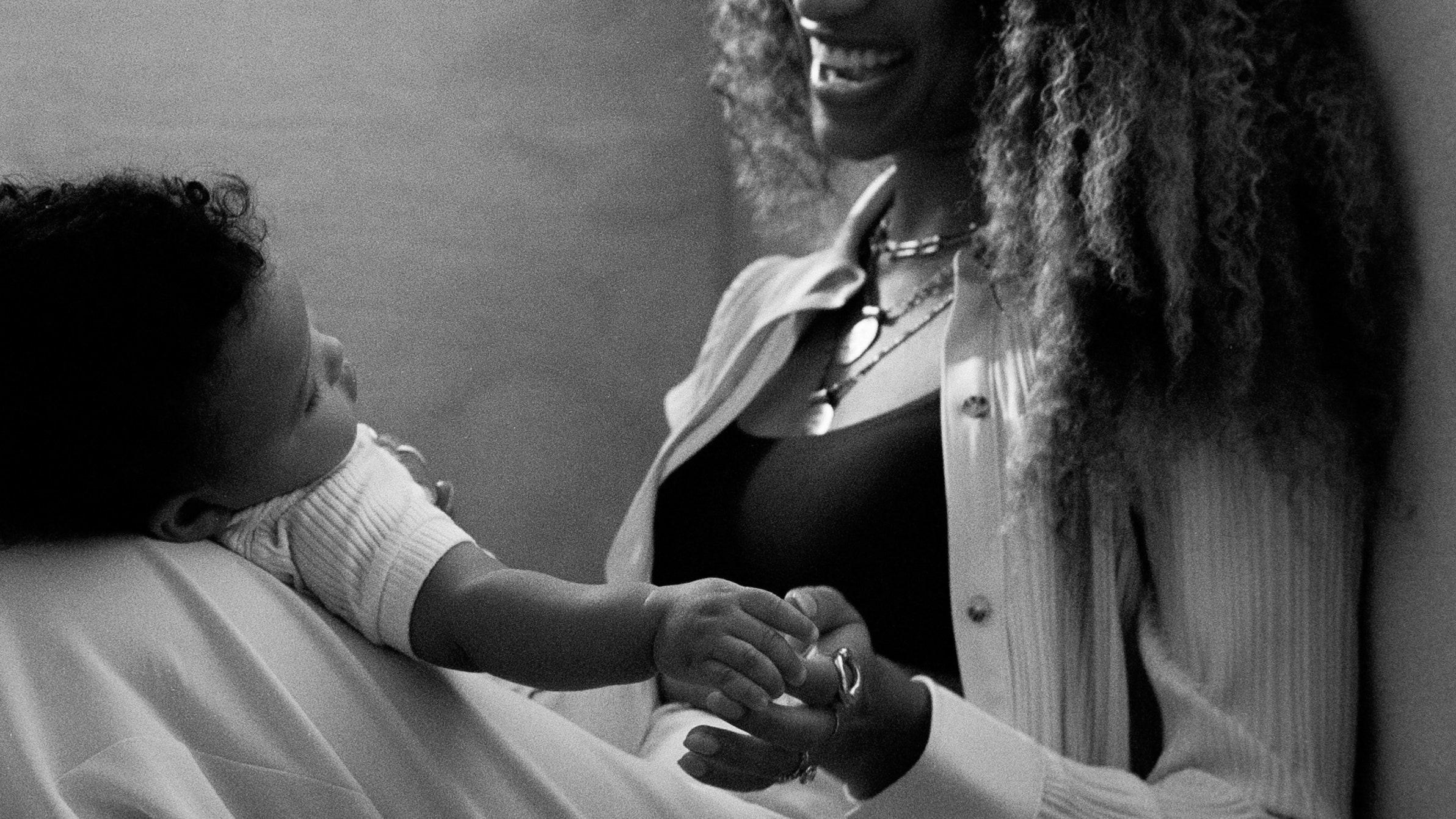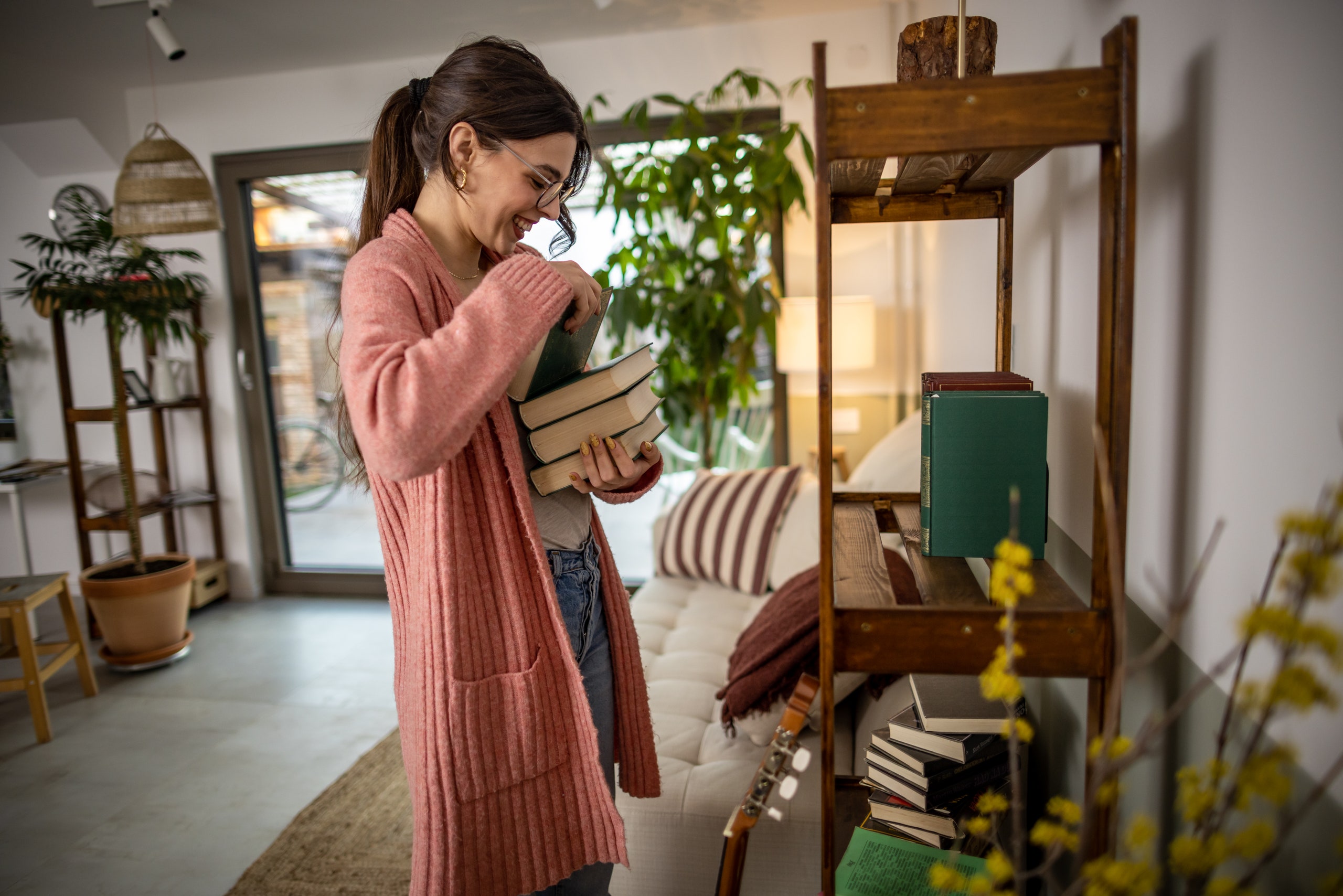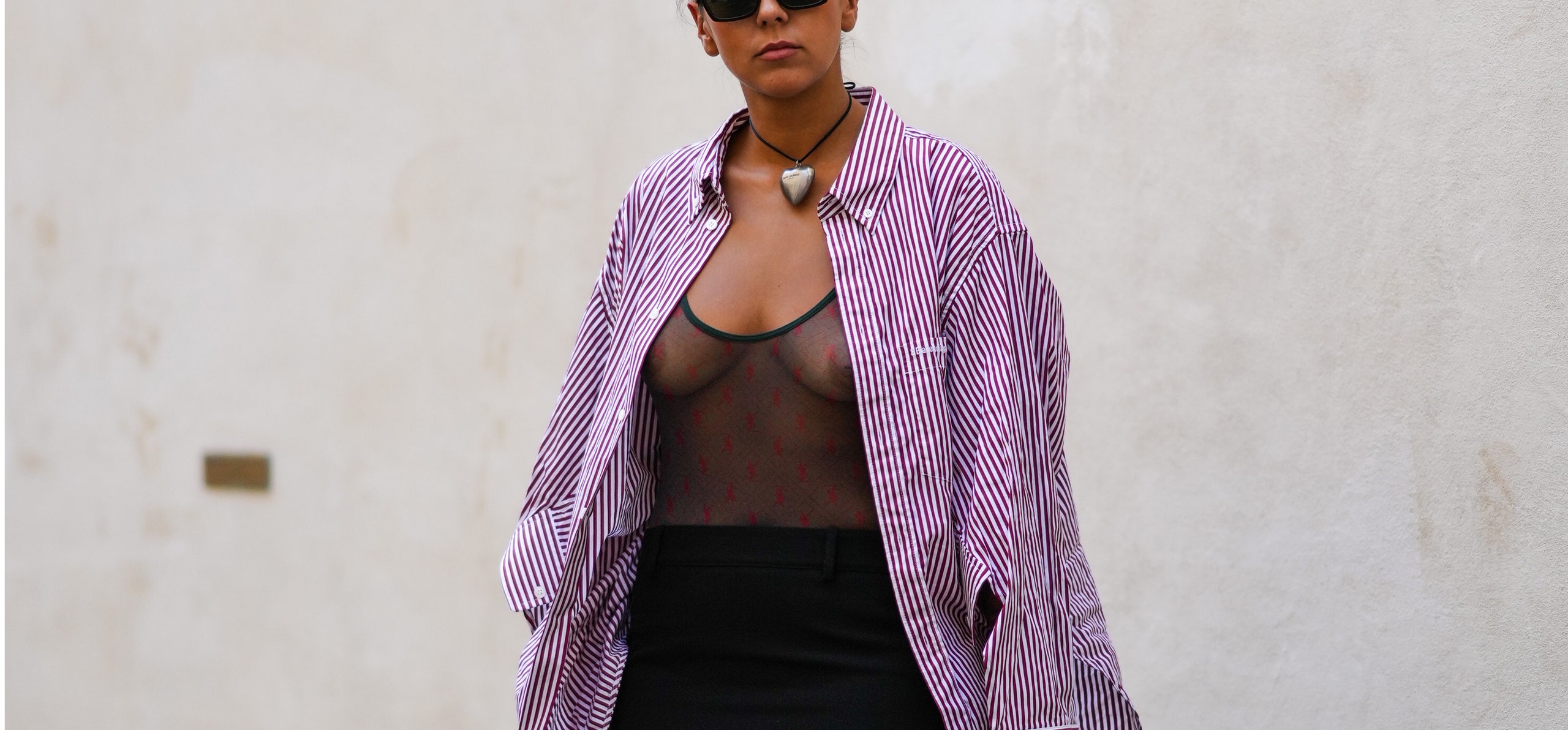Closets that store food can get cluttered quickly. But Jasmyn Coleman and Cathy Percell, who own Reclaim My Pantry in Sacramento, California, say decluttering is as simple as corralling food items in the right bins and storage boxes. But there are rules. One: Don’t buy containers that are too big for what you want to store. If your containers look half-empty, you might be tempted to buy more pasta or dried oats than you need in order to fill the space, and end up tossing unused food after it sits there for months.
“Another important tip,” says Coleman, “is labels, labels, labels!” Adding labels is especially important if you’re organizing a space that’s used by multiple people, whether it’s family members or roommates. Once you do, “everyone knows where everything is or where it needs to be placed, what item needs to be replenished.”
When Corrie Jackson, co-owner of Maison Haven in Greenwich, Connecticut, first saw this closet, it was a mishmash of mismatched gift wrap, files, and serving dishes. So the first step, she said, was deciding what this closet was going to be. She and the clients settled on a hardworking gift closet. “We’ve learned over the years that if a space looks beautiful, it’s more likely to stay that way,” Jackson says. She suggests creating a “mood board” to help visualize the space.
To keep this closet organized, Jackson created “zones” for specific items: Gift wrap is stored separately from ribbons and tissue paper. Less used items went to the bottom level, and gift bags went front and center. “Anything you’re reaching for often should be placed in prime real estate,” Jackson says. “That means between knee and shoulder height—no bending down low or reaching up high.”




